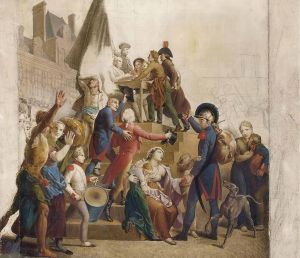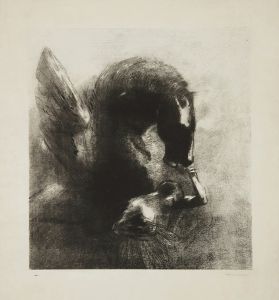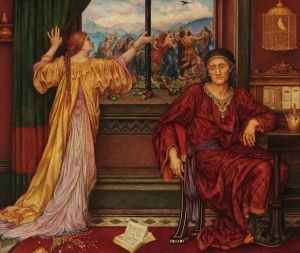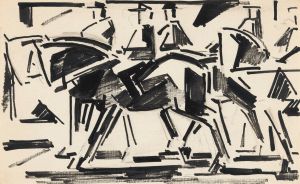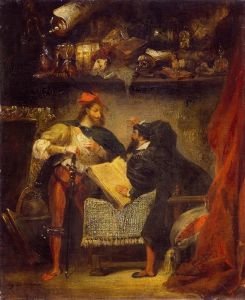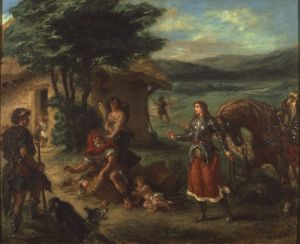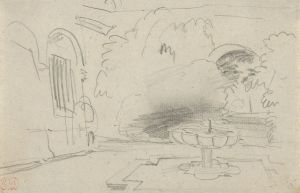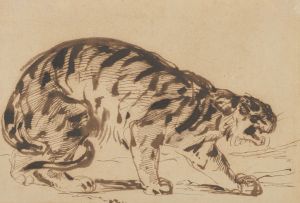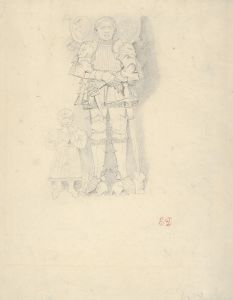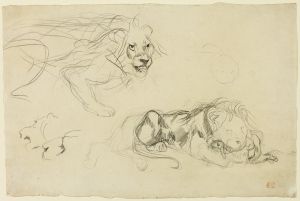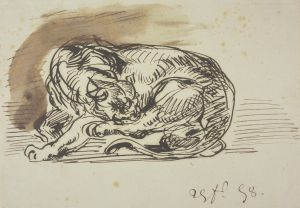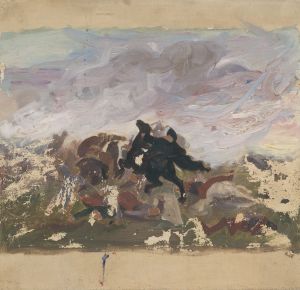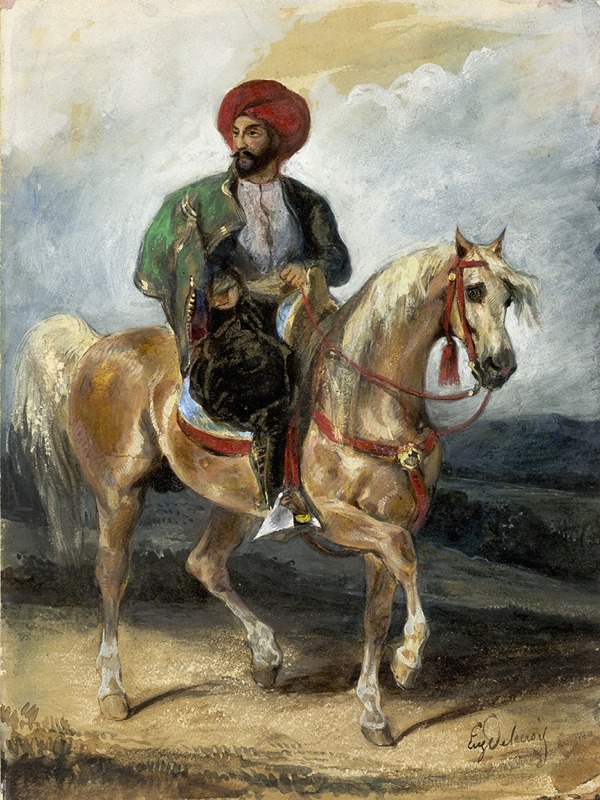
The Turkish Rider
A hand-painted replica of Eugène Delacroix’s masterpiece The Turkish Rider, meticulously crafted by professional artists to capture the true essence of the original. Each piece is created with museum-quality canvas and rare mineral pigments, carefully painted by experienced artists with delicate brushstrokes and rich, layered colors to perfectly recreate the texture of the original artwork. Unlike machine-printed reproductions, this hand-painted version brings the painting to life, infused with the artist’s emotions and skill in every stroke. Whether for personal collection or home decoration, it instantly elevates the artistic atmosphere of any space.
"The Turkish Rider" is a painting by the renowned French Romantic artist Eugène Delacroix, created in 1826. Delacroix is celebrated for his vibrant use of color and expressive brushwork, which are evident in this particular work. The painting is also known by its French title, "Le Cavalier turc," and it reflects Delacroix's fascination with exotic subjects and his interest in the depiction of movement and emotion.
Eugène Delacroix was a leading figure in the Romantic movement, which emphasized emotion, individualism, and the glorification of the past and nature. His works often drew inspiration from literature, history, and his travels, particularly his journey to North Africa in 1832, which had a profound impact on his artistic vision. Although "The Turkish Rider" predates this journey, it demonstrates Delacroix's early interest in Orientalism, a trend in 19th-century European art and literature that depicted the East as a place of romance, exoticism, and adventure.
The painting depicts a solitary rider on horseback, dressed in traditional Turkish attire. The rider's costume is richly detailed, featuring a turban and flowing robes, which add to the exotic appeal of the image. The horse is captured in mid-gallop, showcasing Delacroix's skill in conveying movement and dynamism. The background is somewhat indistinct, focusing the viewer's attention on the rider and his steed, and enhancing the sense of speed and motion.
Delacroix's use of color in "The Turkish Rider" is particularly noteworthy. He employs a vivid palette that includes deep reds, blues, and earthy tones, which create a striking contrast and bring the scene to life. This use of color is characteristic of Delacroix's style and contributes to the emotional intensity of the painting.
The composition of "The Turkish Rider" reflects Delacroix's admiration for the works of earlier masters, such as Peter Paul Rubens, whose influence can be seen in the dynamic arrangement and the robust, energetic forms. Delacroix's ability to blend these influences with his own unique vision helped to establish him as a pivotal figure in the transition from the Neoclassical to the Romantic style in French art.
"The Turkish Rider" is housed in the Musée des Beaux-Arts de Bordeaux, where it continues to be appreciated for its artistic merit and its representation of Delacroix's early exploration of Orientalist themes. The painting remains an important example of Delacroix's contribution to Romantic art and his enduring legacy as a master of color and movement.





